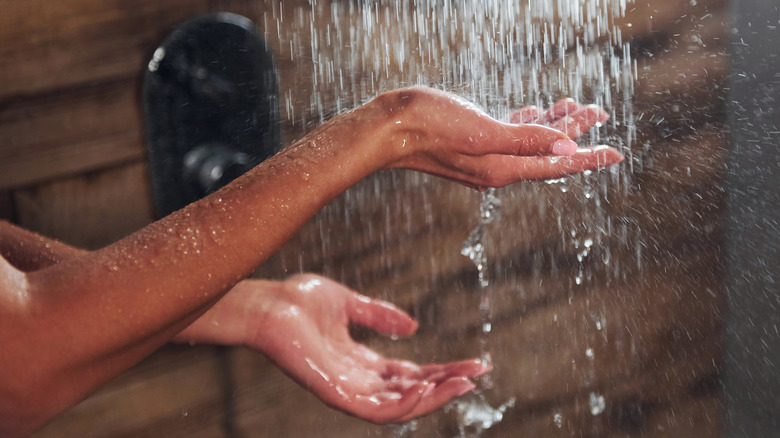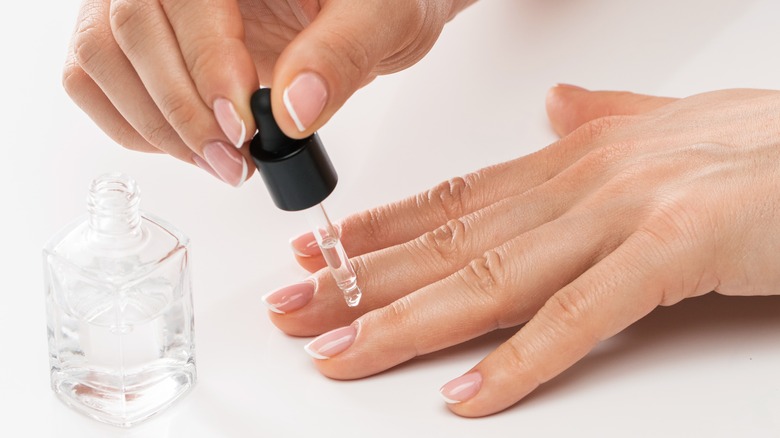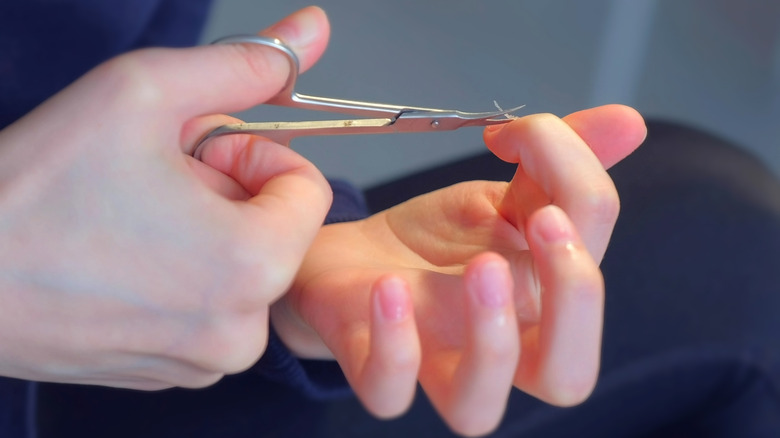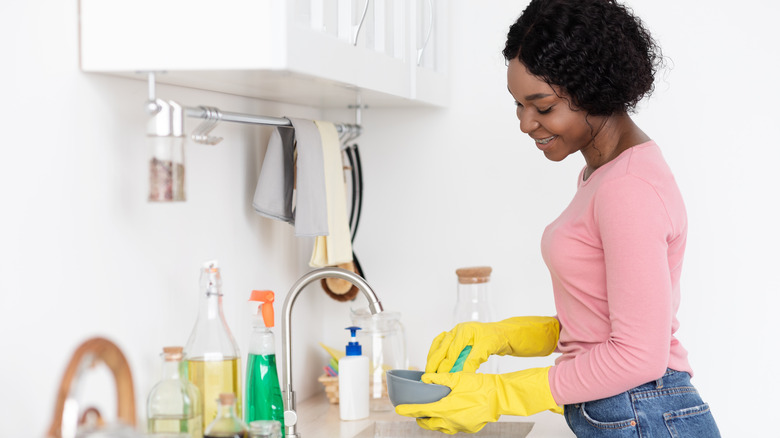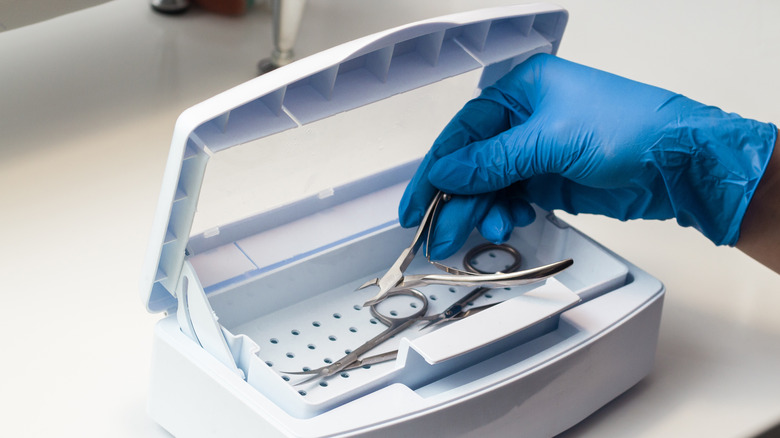7 Cuticle Care Tips For Healthier Nails (& Longer-Lasting Manicures!)
If you've always had beautiful, natural nails, but continuously struggle to maintain them, your cuticles may be at fault. Even if you stay away from manicures involving harsh polishes or chemicals, your nails might not be as strong or smooth as you would like if you don't tend to your cuticles.
This delicate layer of skin, which is located along the bottom edge of each nail, is often underappreciated for all of the work it does. The function of our cuticles is to protect our nails as they grow out from their roots. For this reason, it's essential to focus on keeping them just as healthy as our nails, but this is often easier said than done. Everything from frequent hand washing to acetone exposure can take its toll on our cuticles, sapping them of all their moisture. Dry cuticles are prone to cracking, which can allow bacteria to make their way under the skin. In worst-case scenarios, cuticle infections may develop — a condition known as paronychia – if unhealthy cuticles are not properly cared for.
While paronychia can be treated, you can avoid the situation altogether by simply maintaining your cuticles while caring for your nails.
Hold off on cuticle maintenance until the skin has softened
It's worth noting that not everyone seems to agree on whether to trim cuticles or let them be. If you've received a manicure at a salon before, you've likely seen the nail technician push back your cuticles. Depending on the technician, they may even give them a trim — but some experts believe it's best not to do so. As the Mayo Clinic explains, the purpose of the cuticle is to protect against infection by bonding the skin to the nail plate.
If you prefer to maintain your cuticles by pushing them back or giving them a trim, however, it's important to take precautions as you do so. For instance, over-trimming your cuticles and removing them completely can leave you vulnerable to infection. Ideally, you should push them back while they're soft, and then trim off the excess skin — not the entire cuticle. Using a cuticle remover cream or lotion beforehand can soften the skin to make it easier to push back. If you don't have any at home, consider waiting to do it until after a hot shower or bath — your cuticles will be softer right after you bathe.
Make cuticle oil a part of your handwashing routine
Those who have gorgeous natural nails usually already know the importance of maintaining your cuticles, and a big part of it has to do with keeping them moisturized. Dry cuticles can not only impact new nail growth but also raise the risk of infection, especially if they begin to crack. As you wash your hands throughout the day, your skin may naturally become drier — but this isn't an issue you should let fall by the wayside. Moisturizing your hands after you wash them is critical to preventing everything from hangnails to dry cuticles.
Hand creams and lotions can help, but if your focus is your cuticles, it's best to invest in cuticle oil. Some products include a combination of oils, such as jojoba and safflower, but they all serve the same purpose — to restore moisture to the cuticle. Once you apply a few drops of the oil to your cuticles, massage them into the skin for at least one minute. Read the instructions that come with the product to achieve the best results.
Use proper cuticle tools to see a noticeable difference
If you're a regular at your local nail salon, you've likely seen the wide array of tools that the technicians use for manicures and pedicures. Some of them might seem intimidating to use, but if you're more of the at-home manicure type, these tools can be your best friend for cuticle maintenance.
As you'll discover while shopping for these tools, there are several different types of cuticle pushers, and they can be made out of everything from metal to wood. Many of them are also double-ended, offering two different types of pushers in one. Pay attention to the ends — while you'll want a curved end for pushing, you'll also likely need a pointed end for clean-up around and under your nails.
In addition to finding a cuticle pusher, you'll want to have cuticle clippers (sometimes referred to as cuticle nippers) on hand as well. These can help you clip away excess skin and any hangnails that arise once you push back your cuticles. Some factors to consider when buying cuticle clippers include handle length, jaw size, and spring type, according to Nails Magazine.
Protect your hands, nails, and cuticles with fitted gloves
While handwashing is essential for reducing the spread of bacteria, there's no question that it can quickly dry out your skin. Using hand cream or lotion in addition to cuticle oil can help you combat the effects of frequent washing. However, one tip you may want to try is wearing gloves whenever possible. In those instances where you need to scrub away bacteria with soap and water, gloves can protect your skin and nails whenever your hands have to be submerged in water for an extended time (think dishwashing). Furthermore, they can protect your skin from being exposed to any cleaning products you use. "Chemicals can be extremely harsh on the delicate skin so try wearing gloves when cleaning," manicurist Alyx Lippiatt told The Zoe Report.
Make sure to find a pair of gloves that fit snugly to prevent water and cleaning products from accidentally coming into contact with your hands. As long as you clean them with soap and warm water after each use, your gloves should remain in just as good of shape as your hands, cuticles, and nails.
Don't forget to sanitize all of your tools
Every professional nail salon has a sanitizing routine to ensure that all of the tools they use on their clients are as clean as possible (and if yours does not, it's time to consider going to a new salon!). As you look to take better care of your nails and cuticles, you'll want to adhere to similar precautions if you're doing it at home — this means sanitizing everything from your cuticle pusher to your nail clippers after every use.
As you might have already assumed, cleaning these tools is not exactly a quick process. However, doing so can reduce the chances of developing an infection from using contaminated items, like cuticle clippers. To sanitize your tools at home, all you need is isopropyl alcohol (70% to 90% is best), a bowl, a clean brush, and antibacterial soap. Add a bit of soap to the brush, and begin scrubbing away any debris from the items. Then, rinse each of them under hot water to remove the soap. Pour the isopropyl alcohol into your bowl, and then completely submerge your tools. Keep them in the bowl for about 30 minutes, and then allow them to completely air dry afterward. Remember to take the material of your tools into account before you begin cleaning — plastic, for example, may not be as resilient while cleaning as stainless steel.
Avoid gnawing at your cuticles at all costs
For some, avoiding nail biting and picking is easier said than done. If you fall into the category of people who pick at their nails and the surrounding skin, you could be doing serious damage to your cuticles. In turn, you may also be impacting the growth of your nails. "Cuticles are meant to protect your nail bed," dermatologist Jaishree Sharad told HealthShots. "They attach the nail to the skin. Picking at them will allow bacteria, dirt, grime, fungi, and yeast to enter the nail bed and cause infection or allergies."
Paronychia, the cuticle infection that can result in pain and inflammation, is also a real risk if you frequently pick or nip at your skin. Depending on the severity of the situation, you may need to seek medical treatment to eliminate the infection. However, nail and cuticle biting can also be symptomatic of an underlying psychological condition, such as anxiety. If this has been an ongoing issue for you, reach out to your doctor for more insight.
If you or someone you know needs help with mental health, please contact the Crisis Text Line by texting HOME to 741741, call the National Alliance on Mental Illness helpline at 1-800-950-NAMI (6264), or visit the National Institute of Mental Health website.
Take a moment to give your nails a good soaking
Just because you've never considered your nails to be naturally strong and beautiful doesn't mean it's out of the question — especially if you take care of your cuticles, which is where healthy nail growth starts. If you find it difficult to fit in nail salon appointments and you aren't ready to commit to a full cuticle care routine, there is still one simple way you can keep them healthy at home.
Healthline recommends soaking your hands in soapy, warm water for about 10 minutes every couple of days. This will keep your cuticles soft and clean, even if you don't want to go through the whole process of pushing them back and trimming. Generally speaking, keeping your hands moisturized with lotion throughout the day can also do wonders for your nails and cuticles. Even if you don't have cuticle oil at home, just regular hand lotion or cream can go a long way in preventing cuticle damage. In turn, you'll also be setting yourself up for healthy nail growth, which is exactly what you want to see.

